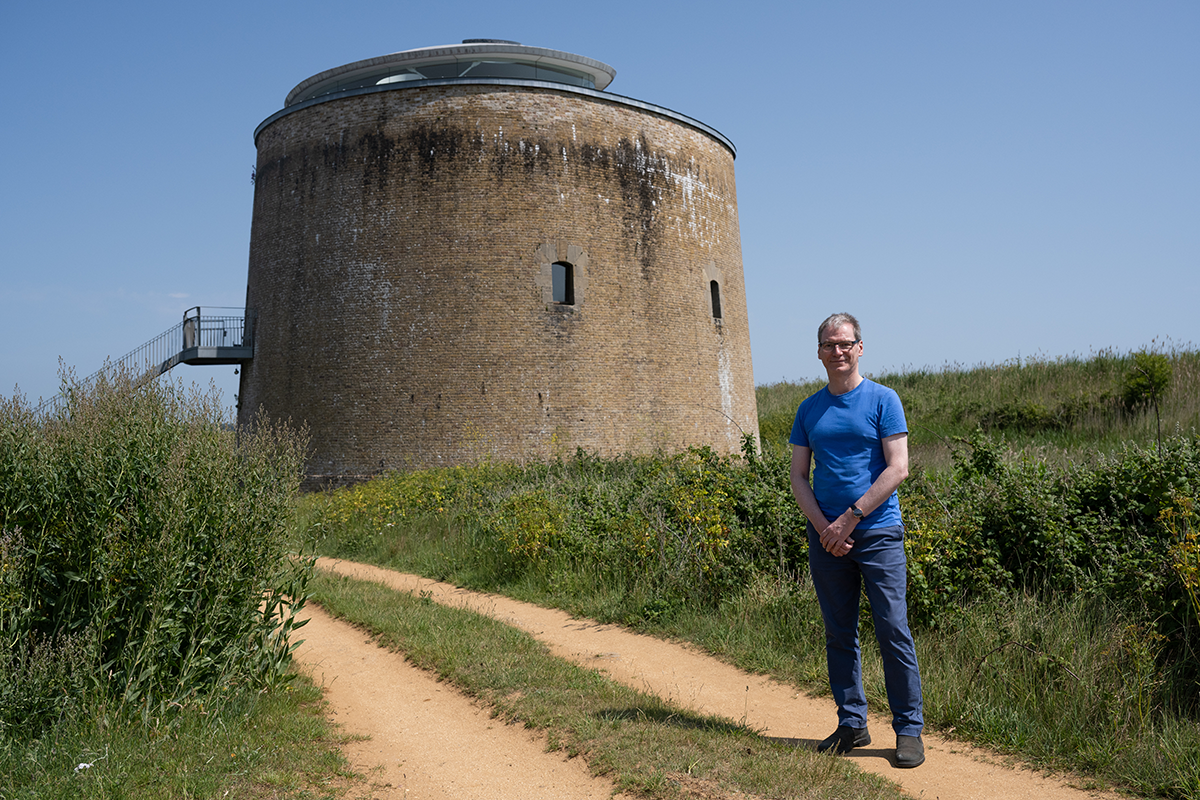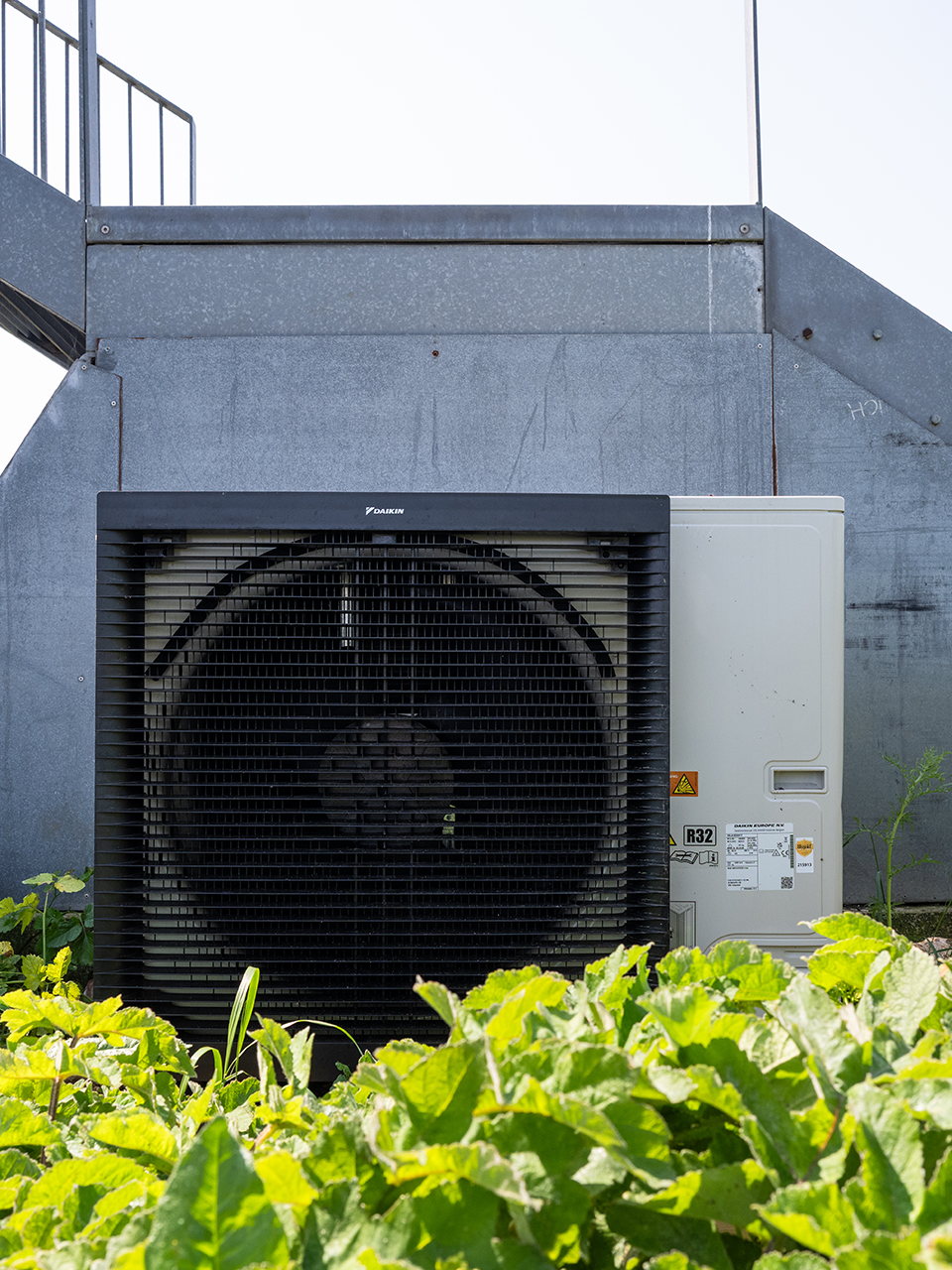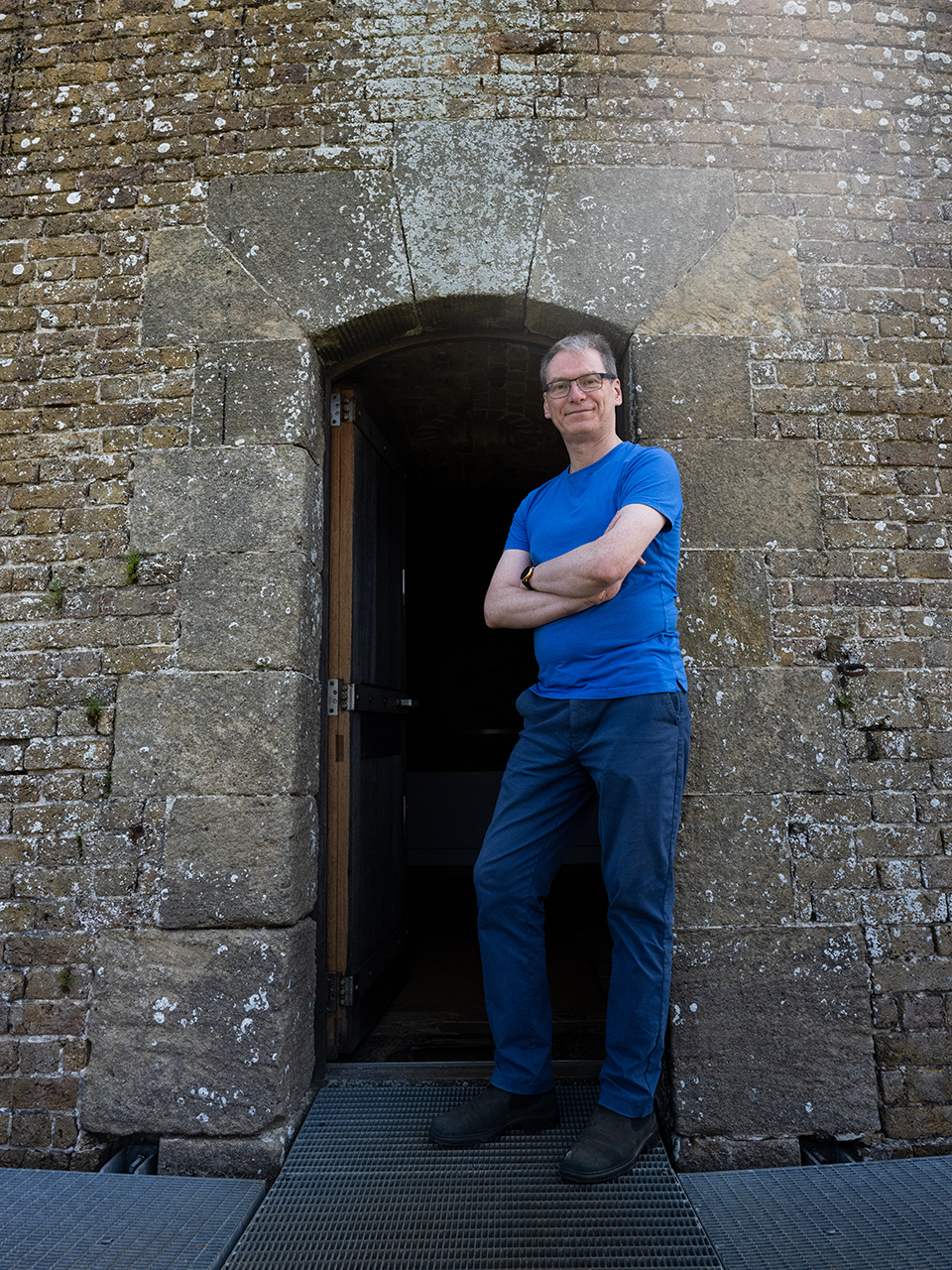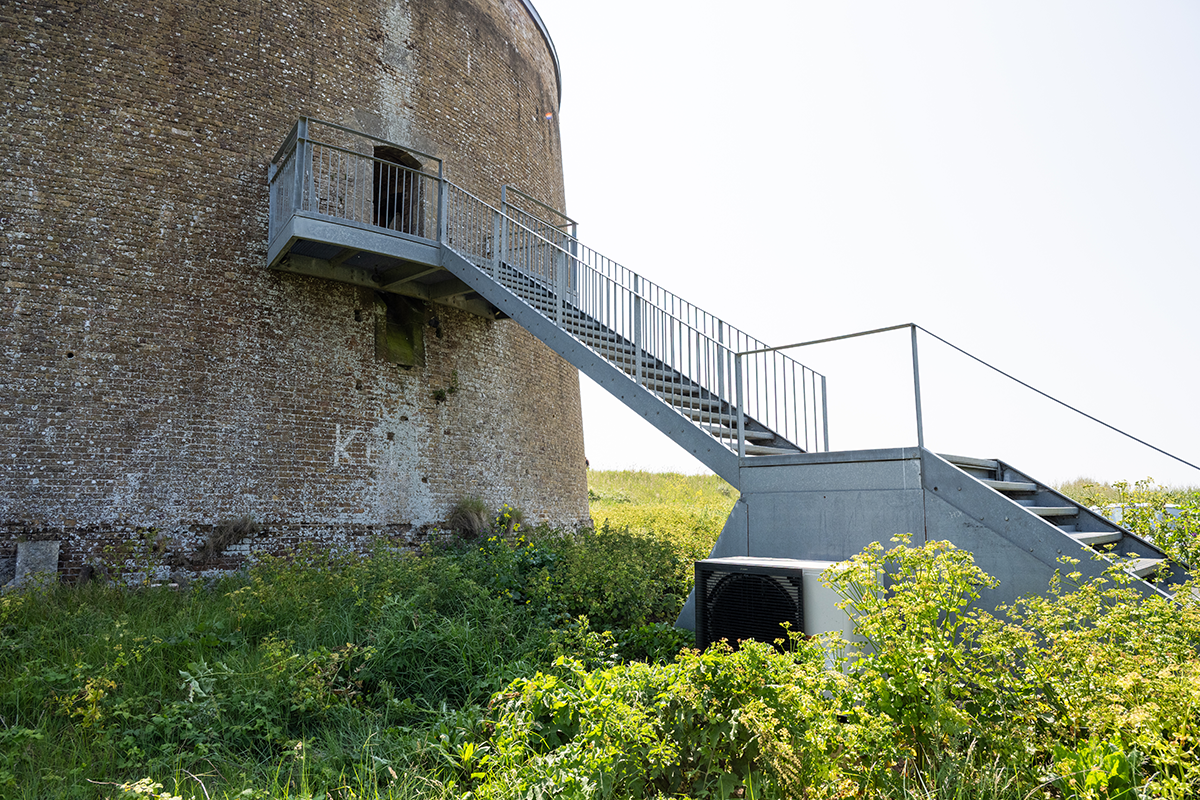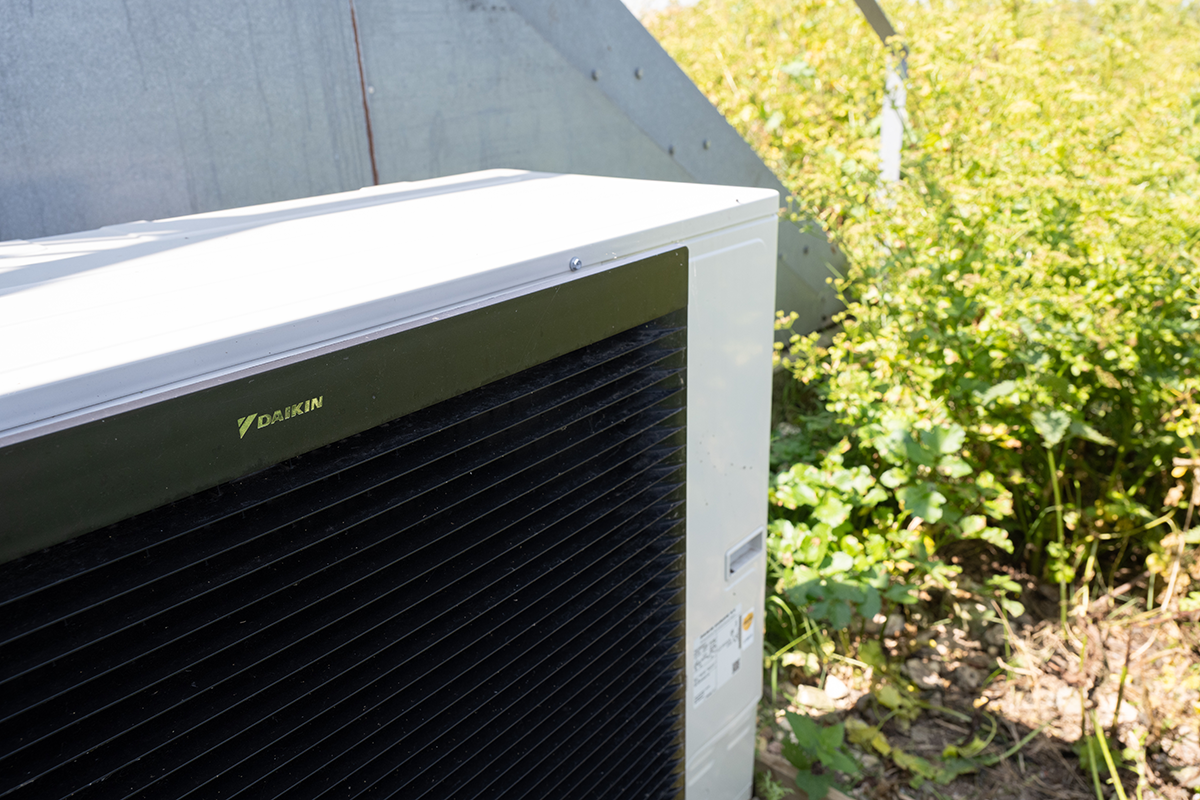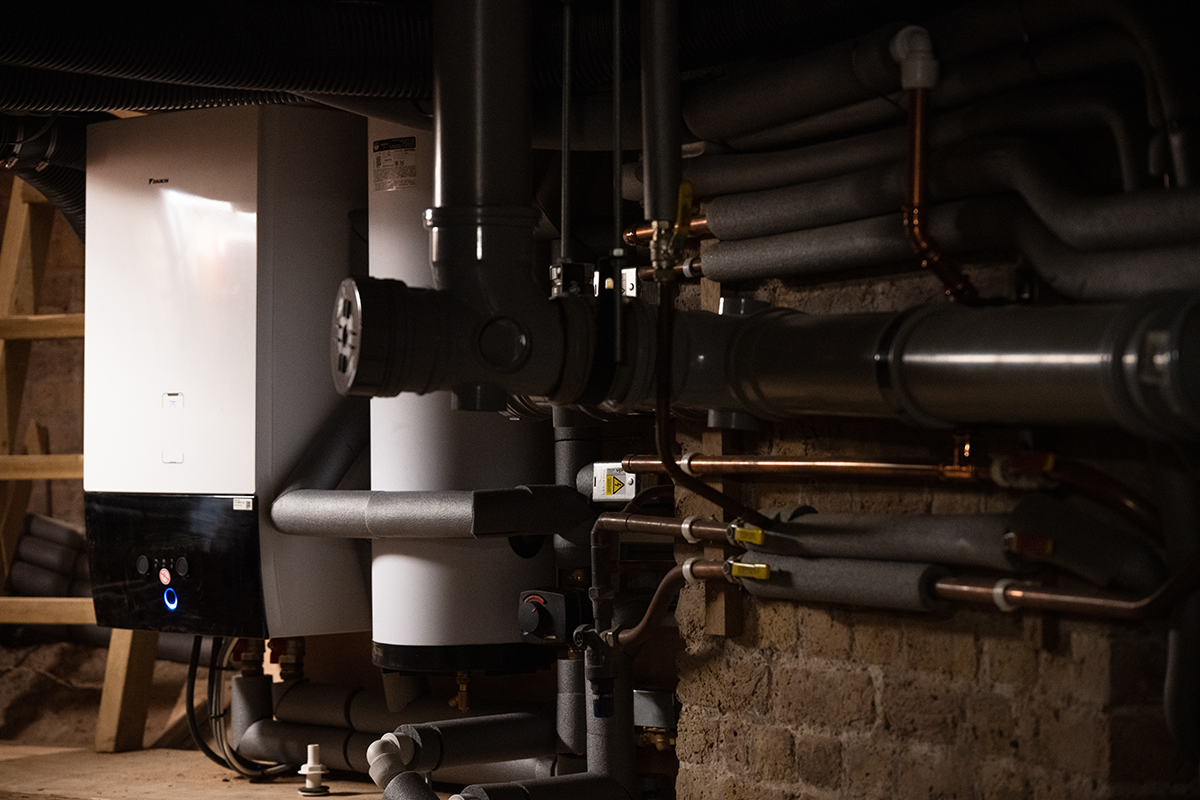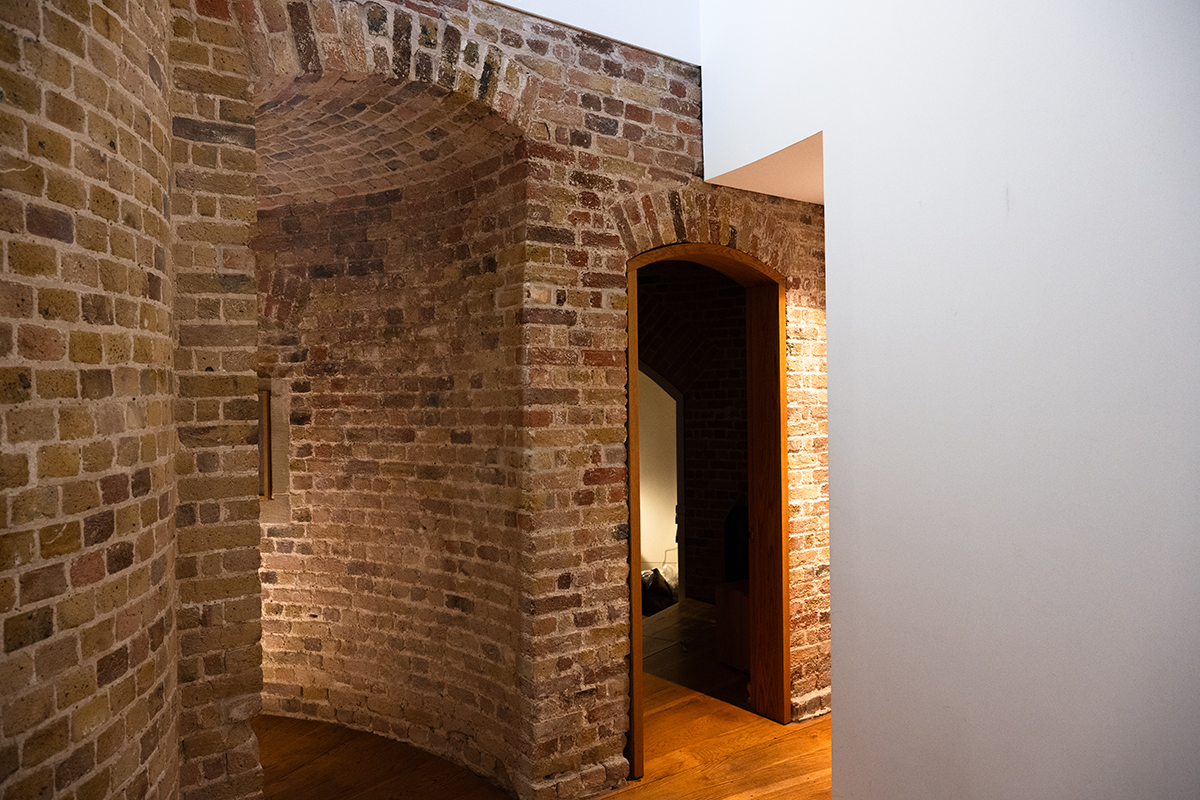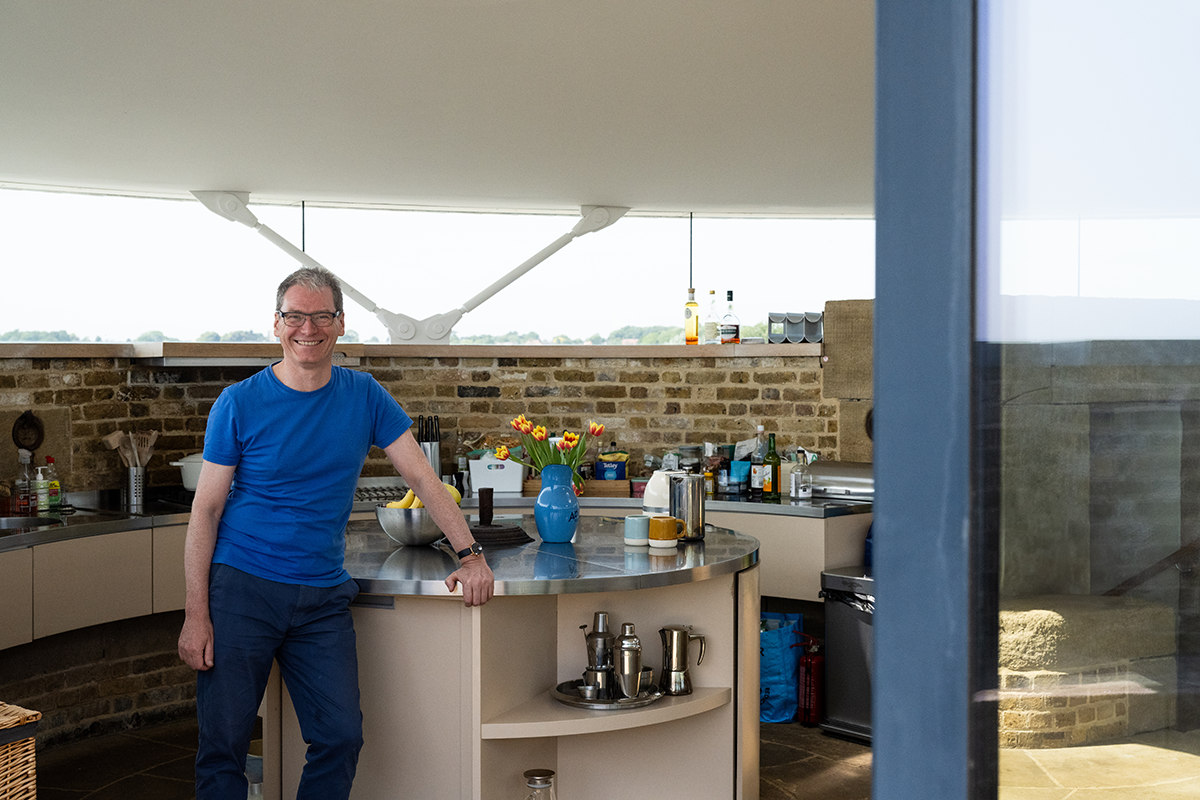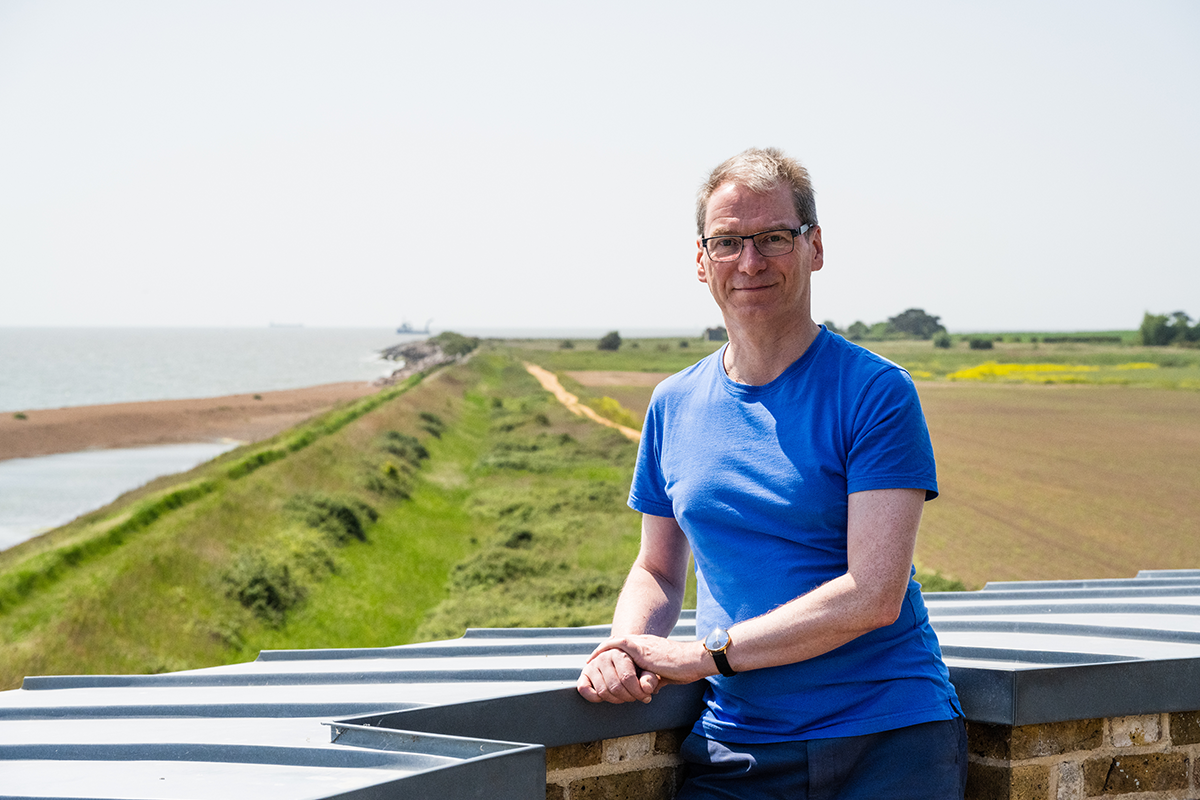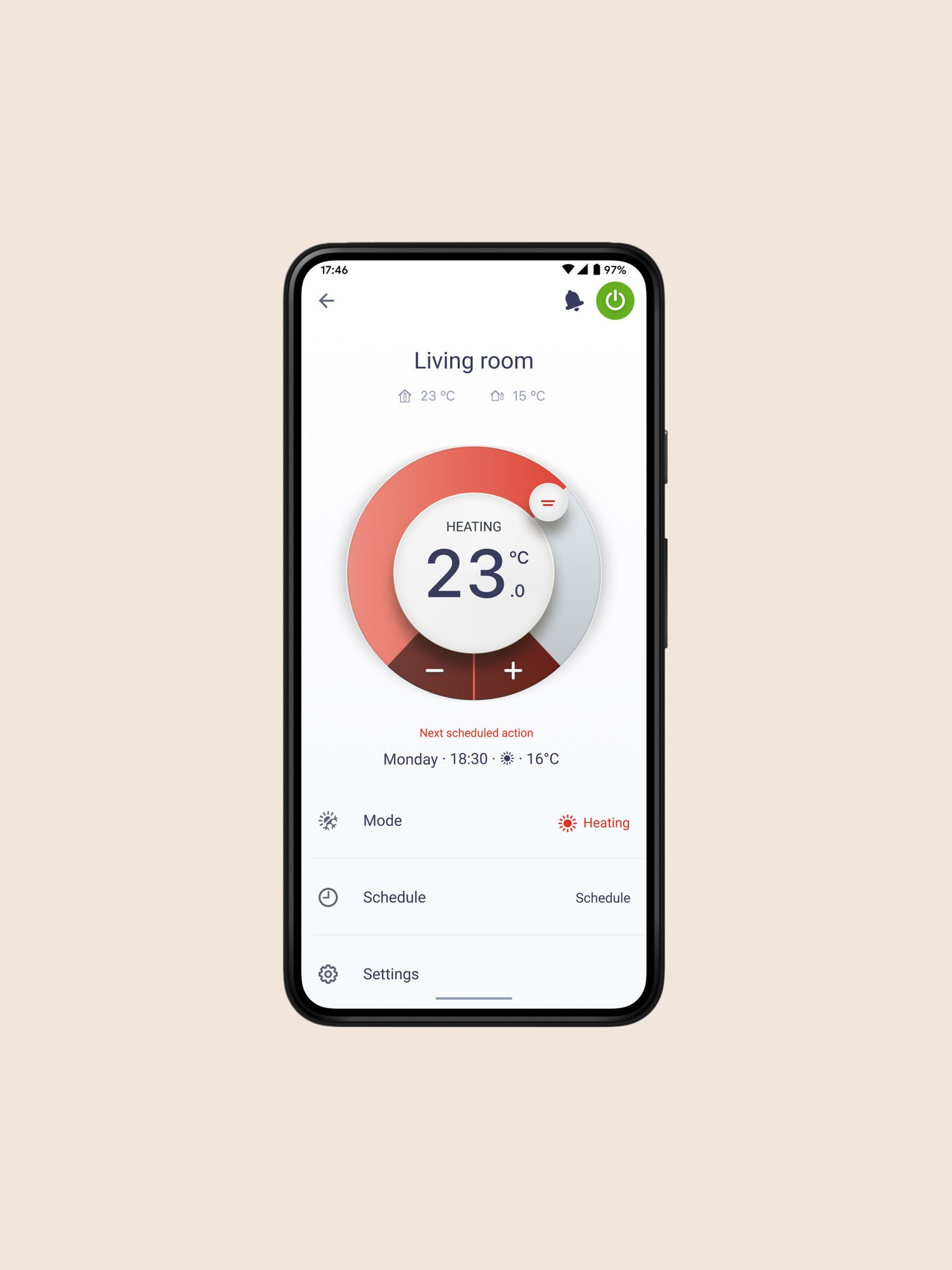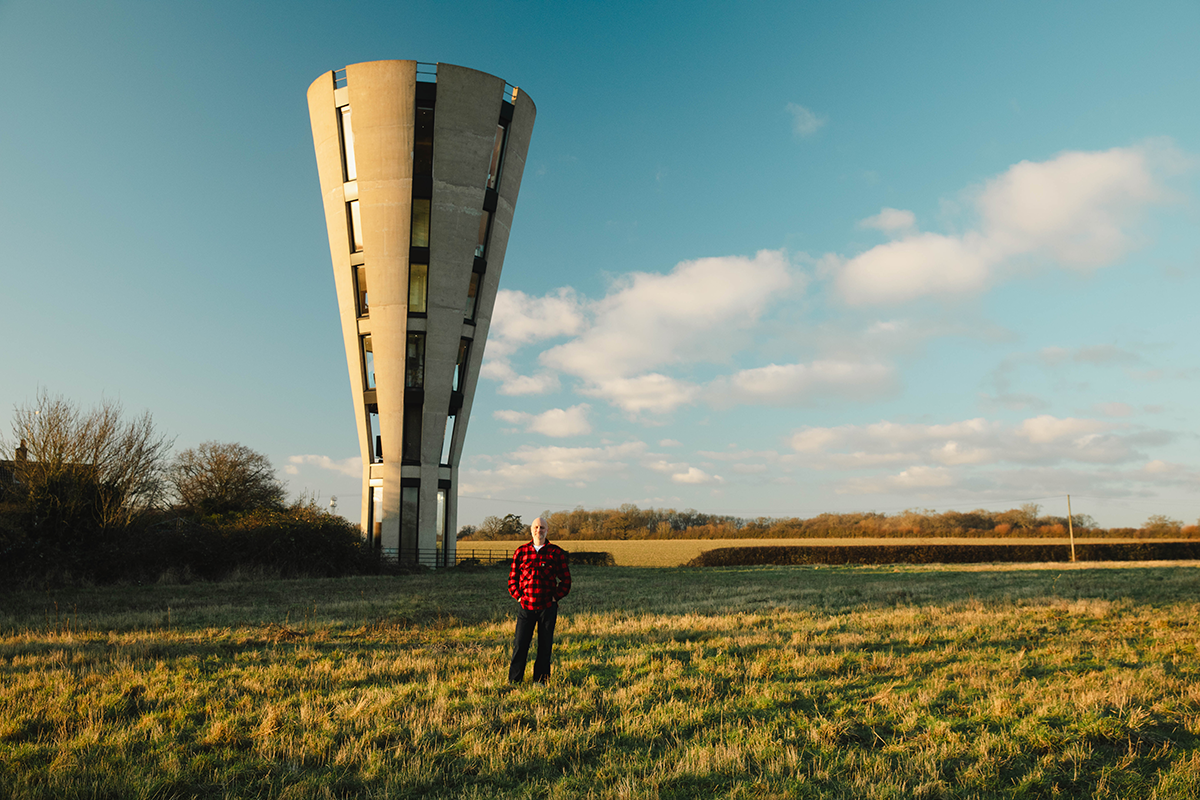Expert thinking with heritage sensitivity
Although multiple installers had ruled out a heat pump altogether, Jonathan spoke to six other installers before connecting with Clima-tech. Ashley saw an opportunity where others hadn’t. “The tower had a wet system in place, with underfloor heating and radiators, so that opened the door to an air-to-water setup,” he explains. “The key was finding a way to do it without affecting the historic fabric of the building.”
Luckily, an old drainage hole, previously blocked with a few inches of concrete, offered a solution. “I even had to request for this bit of concrete to be removed – and that took months for permission – but it was granted and that gave us an existing route for the pipework,” says Jonathan. “No new impact on the external structure, and it ticked the box for Historic England.”
Daikin’s heat pump system was the natural choice. “It allows for long pipe runs with minimal heat loss and much less visible external kit,” explains Ash. “That means it’s perfect for heritage buildings where aesthetics and original infrastructure can’t be compromised.”
Planning, patience - and a very small hatch
Gaining listed building consent took six months, with Ash providing all the necessary documentation and drawings to support the application. The installation itself took two weeks, plus a few follow-up visits to fine-tune the hydraulics.
“The heating plant room is a doughnut-shaped cellar under the tower,” Jonathan explains. “So Ash couldn’t go through the floors above, everything had to fit through a tiny floor hatch. He was pretty stoic - carrying heat pumps, pipework, and even a new hot water cylinder down 50 steps and through tight curves.”
A new circulation pump, upgraded plumbing, and a fully reconfigured control system brought the whole project together. “There was a lot of thinking on our feet,” says Ash. “The existing smart home system wasn’t usable, so we replaced that too.”
Remote control, real-world comfort
With Daikin’s Onecta app offering modern smart controls, Jonathan now manages the system from his home three hours away. “I rent the tower out, so being able to warm it up before guests arrive, or shut it down when they leave, is a game changer,” he says. “Before, guests would fiddle with thermostats or leave the heating on. Now it’s controlled, consistent, and finally very affordable. I live over 100 miles away from the tower and having that convenience via Onecta is amazing.”
The running costs have dropped by at least 30%, and feedback from paying guests has been very positive. “We used to have hot water issues, mainly around low pressure in the showers,” Jonathan adds. “Now the showers are strong, the heating’s balanced, and the building is comfortable all year round.”
The tower’s unusual internal layout, especially the glass-heavy top floor, still presents some zoning challenges, but the core system is now robust and efficient. The combination of the Daikin heat pump with the existing MVHR (mechanical ventilation with heat recovery) system means heat is retained without opening windows, keeping energy use low and comfort high.
A showcase in sympathetic retrofit
For Ash, the Martello Tower project was a standout. “It’s a brilliant example of how modern, efficient systems can work in historic, complex buildings,” he says. “Daikin’s Altherma system gives us that flexibility, and their support is always very reliable.”
When they built this sturdiest of monuments in the early 19th Century to repel a Napoleonic invasion, who could have imagined that it would be Daikin who would finally overcome the ravages of the ever-invasive cold, over 200 years on.
